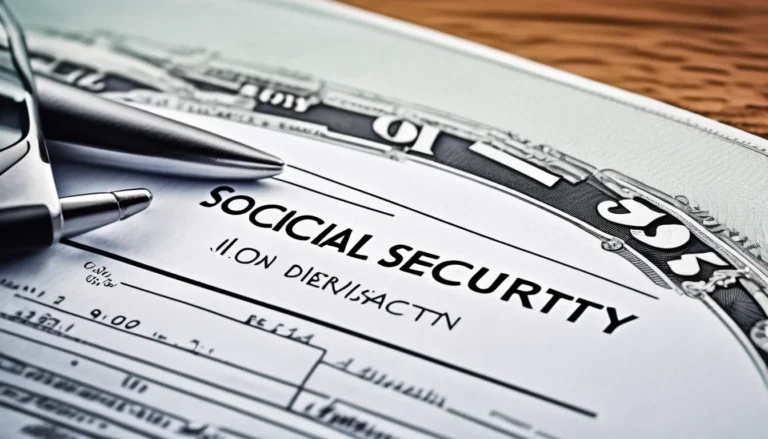Investing for Retirement: The Best Strategies for 2025

Retirement is something most people look forward to, but preparing for it requires careful planning and smart financial strategies. With the rapid changes in the economy, markets, and even technology, it’s more important than ever to have a well-thought-out investment plan for retirement. For those looking to secure a comfortable future in 2025, here’s a comprehensive guide to the best retirement investment strategies in the USA.
Understanding Retirement Planning
Before diving into specific strategies, let’s first understand the importance of retirement planning. The primary goal is to build a nest egg that will provide you with financial stability when you can no longer rely on active income from working. This involves saving and investing consistently, managing risks, and ensuring that your investment grows over time to meet your future needs.
The key is to start early, stay disciplined, and continually review your strategy to adapt to changes in your life, the market, and the economy. For those getting serious about retirement in 2025, the following strategies can help maximize growth potential while protecting against risks.
1. Maximize Contributions to Retirement Accounts
One of the first steps toward a secure retirement is maximizing contributions to retirement accounts such as a 401(k), IRA (Individual Retirement Account), or Roth IRA. These accounts offer tax advantages that help you save money for retirement in the long term.
- 401(k): If your employer offers a 401(k) plan, try to contribute enough to take full advantage of any employer matching contributions. This is essentially free money, so don’t leave it on the table. In 2025, the contribution limit for 401(k) plans is $22,500 (or $30,000 if you are 50 or older).
- Traditional IRA: Contributions to a traditional IRA are tax-deductible in the year you contribute, lowering your taxable income. In 2025, you can contribute up to $6,500, or $7,500 if you’re 50 or older.
- Roth IRA: While Roth IRAs don’t provide an upfront tax deduction, your withdrawals in retirement are tax-free. In 2025, the contribution limit for a Roth IRA is also $6,500, or $7,500 for those over 50. Note that income limits apply to Roth IRA eligibility.
2. Diversify Your Investment Portfolio
Diversification is one of the most important principles of investing, especially when planning for retirement. A diversified portfolio helps to spread out risk, reducing the chance that your entire investment will lose value if one sector of the market underperforms.
For 2025, it’s important to have a mix of stocks, bonds, real estate, and other investment types that align with your risk tolerance and retirement timeline.
- Stocks: Equities are crucial for long-term growth, as they tend to outperform other asset classes over extended periods. However, they are also more volatile. In 2025, you should consider investing in a mix of individual stocks, mutual funds, or exchange-traded funds (ETFs) that align with your retirement goals.
- Bonds: Bonds offer more stability and lower risk than stocks. They should be a part of your retirement portfolio to balance the potential volatility of equities. As you approach retirement, you may want to increase your bond allocation to protect against market downturns.
- Real Estate: Real estate can be an excellent hedge against inflation. Consider adding real estate investment trusts (REITs) to your portfolio if you’re looking to invest in the sector without the hassle of owning physical property.
- Alternative Investments: In 2025, many investors are looking into alternative assets such as cryptocurrency, precious metals, and commodities. These can serve as a store of value and diversify your portfolio further. However, they come with additional risks and volatility, so they should be a small part of your overall strategy.
3. Embrace Tax-Efficient Investing
Taxes can take a significant bite out of your investment returns, which is why tax-efficient investing is crucial. In 2025, there are several strategies you can use to reduce your tax liabilities.
- Tax-Deferred Accounts: By contributing to tax-deferred accounts like a 401(k) or traditional IRA, you can lower your taxable income and defer taxes until retirement when your income is typically lower.
- Tax-Free Accounts: Roth IRAs and Roth 401(k)s allow your investments to grow tax-free, and withdrawals are not subject to tax. If you’re planning for retirement, a tax-free account can significantly improve your returns over time.
- Tax-Loss Harvesting: This involves selling investments that have lost value to offset gains in other areas of your portfolio. By reducing your taxable income, you can reinvest those savings to grow your retirement nest egg.
4. Consider Dollar-Cost Averaging (DCA)
Dollar-cost averaging (DCA) is a strategy where you invest a fixed amount of money into a particular investment at regular intervals, regardless of the market’s performance. This strategy is especially useful for long-term retirement planning because it smooths out market volatility.
Instead of trying to time the market, DCA allows you to buy more shares when prices are low and fewer shares when prices are high, reducing the impact of short-term market fluctuations. This can be particularly beneficial in the current market environment, which may experience significant ups and downs in 2025.
5. Rebalance Your Portfolio Regularly
Over time, your investment portfolio may become unbalanced due to the performance of certain assets. For example, if stocks perform well, they may make up a larger portion of your portfolio than intended, increasing your exposure to risk.
To maintain your desired risk level, it’s important to periodically rebalance your portfolio. This involves adjusting your investments by selling portions of assets that have grown disproportionately and reinvesting the proceeds in areas that are underrepresented.
Rebalancing can be done on a quarterly, semi-annual, or annual basis, depending on your preference and investment goals. Just be sure to take into account any changes in your financial situation or risk tolerance.
6. Invest in Growth Assets Early, Shift to Safe Assets Later
The growth phase of your retirement investments typically occurs when you’re in your 20s, 30s, and 40s. During this phase, you should focus on riskier, higher-growth investments like stocks and equity-based mutual funds or ETFs.
As you get closer to retirement, however, the goal shifts from accumulating wealth to preserving it. At this point, it’s advisable to gradually shift your assets into safer, more conservative investments such as bonds, dividend-paying stocks, or money market funds. This helps minimize the risk of losing a large portion of your retirement savings just before you need it.
7. Create a Withdrawal Strategy
Once you retire, you’ll need to start drawing from your retirement accounts. It’s important to have a clear withdrawal strategy in place to ensure that you don’t deplete your savings too quickly.
- The 4% Rule: One popular strategy is the 4% rule, which suggests that you withdraw 4% of your retirement savings per year. This amount is considered sustainable and allows your portfolio to last for about 30 years. However, this is a general guideline, and you may need to adjust this based on market conditions and personal expenses.
- Buckets Strategy: Another strategy involves dividing your retirement funds into three “buckets”: short-term (cash), medium-term (bonds), and long-term (stocks). You use the short-term bucket for immediate expenses and let the long-term bucket grow over time.
8. Plan for Healthcare Costs
Healthcare costs are a major concern for retirees, especially as they age. In 2025, it’s important to factor in potential medical expenses into your retirement planning.
- Health Savings Accounts (HSAs): If you’re eligible, contributing to an HSA can be a smart way to save for healthcare costs. HSAs offer triple tax advantages: tax-deductible contributions, tax-free growth, and tax-free withdrawals for medical expenses.
- Long-Term Care Insurance: Consider purchasing long-term care insurance to protect against the potentially high costs of long-term care in the future.
9. Stay Informed About Market Trends
In 2025, it’s crucial to stay informed about market trends that can impact your retirement planning. Technological advancements, changing tax laws, and economic shifts can all affect your strategy. Keep an eye on interest rates, inflation, and stock market volatility, as they can influence your investment returns.
Conclusion
Retirement planning in 2025 requires a strategic and diversified approach to investing. By maximizing contributions to retirement accounts, diversifying your portfolio, using tax-efficient strategies, and regularly rebalancing your investments, you can set yourself up for a financially secure retirement. Whether you’re just starting your retirement journey or looking to optimize your existing strategy, staying disciplined and informed will help ensure that you can enjoy your retirement without financial worries.




